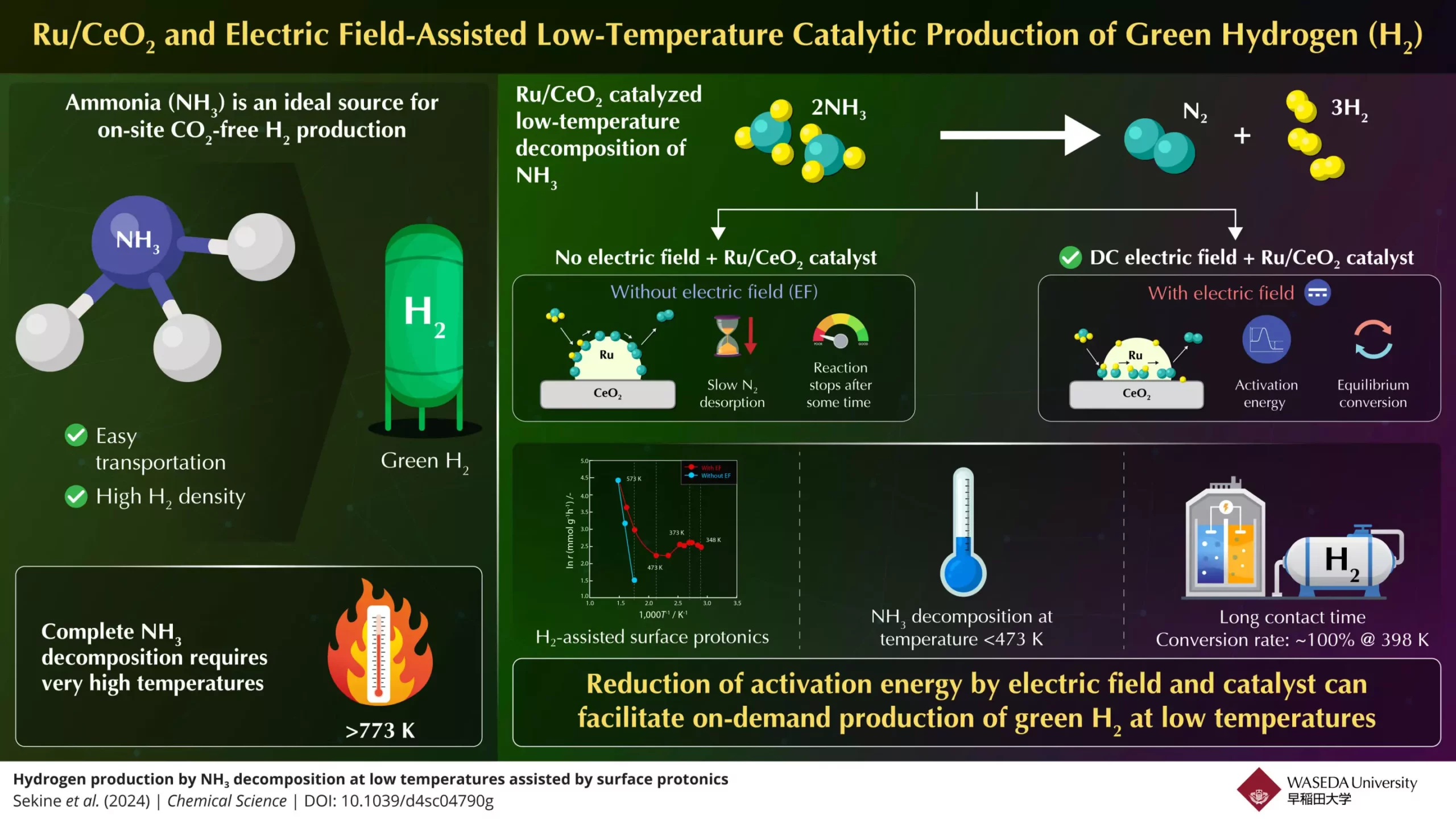Hydrogen gas is increasingly being recognized as a cornerstone in the quest for sustainable and carbon-free energy solutions. Renowned for its high energy density, hydrogen presents a tantalizing opportunity for the future of eco-friendly energy. Despite its status as the universe’s most plentiful element, hydrogen primarily exists in bound forms within compounds like ammonia and metal hydrides. The urgent need to transition to sustainable energy sources has spurred research into various hydrogen carriers, with ammonia emerging as a particularly compelling option due to its high hydrogen content—making up about 17.6% of its mass—along with its relative ease of liquefaction and transport.
While ammonia has significant advantages as a hydrogen carrier, the practical application of ammonia as a source of on-demand green hydrogen faces considerable hurdles. The most substantial barrier lies in its decomposition, which necessitates extremely high temperatures—exceeding 773K—for effective hydrogen production. Such conditions not only complicate operational requirements but also limit the commercial viability of ammonia-to-hydrogen systems in fuel cells and internal combustion engines. As the global community seeks to harness hydrogen’s potential, there is a pressing need for technological innovations that can lower decomposition temperatures and improve ammonia conversion rates.
Amidst these challenges, a groundbreaking advance has emerged from the collaboration of researchers at Waseda University and Yanmar Holdings, led by Professor Yasushi Sekine. Their innovative approach involves a compact process that significantly lowers the temperature needed for ammonia decomposition. By integrating a direct current (DC) electric field with a catalyst made from ruthenium and cerium dioxide (Ru/CeO2), the team has engineered a system that not only accelerates hydrogen production but also performs efficiently at temperatures previously deemed unsuitable.
As explained by Sekine, the project’s goal was to unlock the potential of ammonia for hydrogen generation on-demand. They meticulously examined traditional thermal catalytic systems, which typically involve complex processes of bonding and releasing nitrogen and hydrogen molecules. Through their research, the team discovered that the desorption of nitrogen at lower temperatures was a significant bottleneck—one that could be addressed through the application of electric fields to aid the catalytic reactions.
The experimental results were conclusive and promising; the team successfully demonstrated that the use of an electric field in conjunction with their Ru/CeO2 catalyst allowed for the decomposition of ammonia at temperatures as low as 398K, achieving an extraordinary conversion rate of 100%. Such efficiency is particularly notable as it surpasses the equilibrium conversion rate, indicating that their method bypasses the traditional energy limitations associated with ammonia decomposition. The ability to promote surface protonics—where protons migrate across the catalyst surface—was a pivotal factor in reducing the required activation energy for the reaction.
Notably, when the electric field was absent, the nitrogen desorption process slowed appreciably, leading to a halt in ammonia decomposition. This highlighted the critical role of surface protonics not only in accelerating the reaction but also in ensuring a continuous and efficient pathway for hydrogen production.
The implications of this research project extend far beyond mere academic interest; they point toward a significant advancement in the realization of clean, on-demand hydrogen as a viable energy source. As stated by Sekine, this innovative approach could facilitate the widespread adoption of hydrogen as an alternative fuel, making the synthesis of CO2-free hydrogen not only plausible but practical.
The work performed by Sekine and his team showcases the potential of ammonia as a hydrogen carrier, marrying innovative scientific inquiry with real-world applications. As the world wrestles with energy sustainability challenges, such groundbreaking advancements could very well define the path toward a carbon-free future, empowering industries to transition to cleaner energy systems efficiently.


Leave a Reply